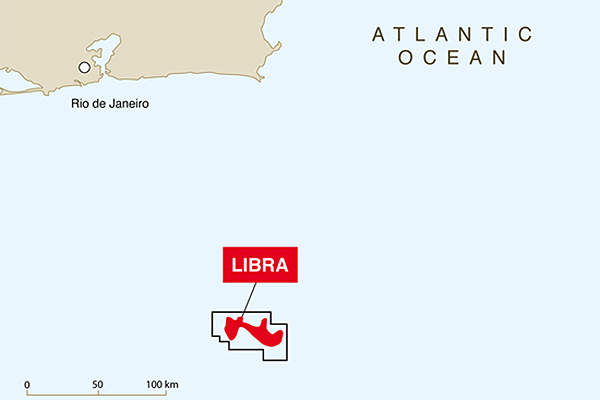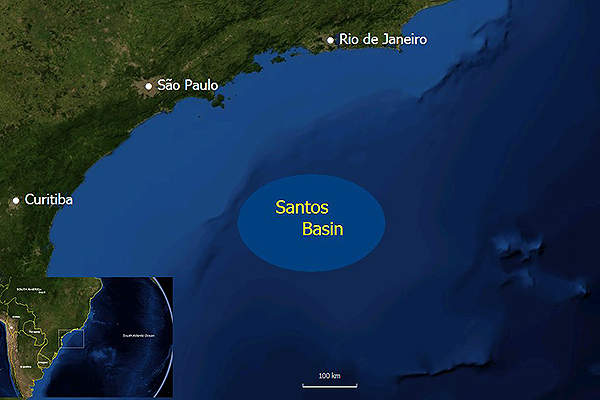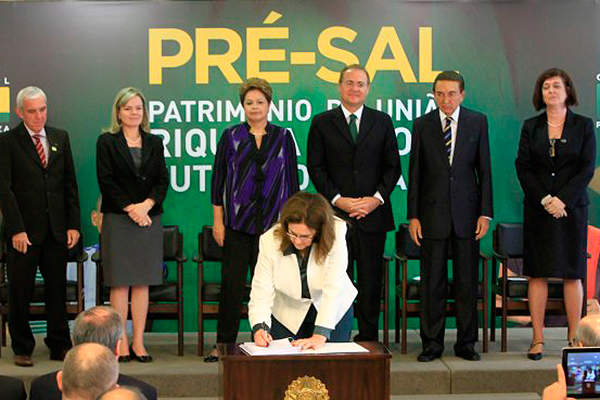The Libra oilfield, located in the Santos Basin, Brazil, is one of the world’s biggest deepwater oil discoveries.
It is located in the BM S11 block of the Santos basin, approximately 230km (140 miles) north of the Tupi oilfield and 200km south of Rio de Janeiro.
The BM S11 block covers an area of 1,547.76km² at a water depth of roughly 2,000m (6,500ft), while the Libra field reservoir lies at a water depth of approximately 3,500m (11,500ft) below sea level.
Libra is Brazil’s biggest oilfield to date and is expected to produce 1.4 million barrels of oil a day (mmbod) by 2021.
The Brazilian state oil sector regulator, Agência Nacional do Petróleo (ANP), selected a consortium headed by Petrobras in October 2013 to develop the field under a 35-year production sharing contract (PSC).
Known as Libra Oil & Gas, the consortium comprises Petrobras (40%), Shell (20%), Total (20%), CNOOC (10%) and CNPC (10%).
Petrobras signed the exploration and production agreement for the field in December 2013 and is the current operator of the field, while Pré-Sal Petróleo (PPSA) is the PSC manager.
The field development plan was initially approved in January 2014 and first oil from the early production system was achieved in November 2017.
Reserves and production of the Libra oil field
The Libra offshore oilfield contains recoverable resources between 7.9 and 15 billion barrels of oil.
The initial production rate is expected to be 25,000 barrels of oil per day (bopd) per well.
Development details of Brazil’s largest oil field
The field was discovered in May 2010 during the drilling of the 2-ANP-0002ARJS well. The same well was planned to be tested, but had to be abandoned after facing mechanical problems.
The field development is being implemented in phases.
Phase one was an exploration phase comprising 3D seismic studies and the drilling and testing of two exploratory wells and one extended well, as well as other exploration activities. It was completed in 2017.
The first appraisal well was completed and tested in February 2015, followed by the second appraisal well in March the same year.
A total of nine exploration wells were drilled and three wells were completed by March 2015 as part of the field appraisal.
The field is planned to include nine floating production, storage and offloading (FPSO) units linked to 92 production wells and 92 injection wells. It is expected to have a total processing capacity of 150,000bopd.
The field’s initial flow rate will enable the production of 25,000bopd from each well.
Details of Libra FPSOs
Navion Norvegia, a shuttle tanker owned by Teekay Offshore, was converted into a FPSO named Pioneiro de Libra by a joint venture (JV) between Odebrecht Oil & Gas and Teekay Offshore (OOGTK JV).
The conversion was completed at the Jurong Shipyard in Singapore. The FPSO has a production capacity of 50,000bopd and a compression capacity of four million cubic metres of gas a day. It has the capacity to store 650,000 barrels (bbl) of crude oil.
Pioneiro de Libra has been designed to operate at water depths of up to 2,400m and was christened in December 2016. It subsequently reached the Libra block in May 2017.
The FPSO was built at a cost of $1bn and is owned by the OOGTK JV. It is currently chartered to the Petrobras consortium for a period of 12 years.
The Libra 1 FPSO is planned to be installed in the future and is expected to feature a capacity of 150,000bopd.
Contractors involved with the Libra field development
The reserves estimation studies for the field were performed by Gaffney, Cline & Associates.
The OOGTK JV signed a charter and operation contract for the FPSO Pioneiro de Libra FPSO in October 2014.
It also awarded a contract valued at $696m to Jurong Shipyard for the conversion in the same month.
Jurong Shipyard awarded a contract to Technip in June 2015 to provide detailed engineering and procurement services for the FPSO topsides.
Technip was also contracted by the Libra Oil & Gas consortium to supply flexible pipes for the Libra Extended Well Test field in October 2015.
Deltamarin was awarded a €3.2m ($4.04m) contract by Jurong Shipyard in October 2014 to provide basic engineering for the marine components of the tanker conversion.





